How to get rid of cold sores as effectively as possible? Quick and effective help
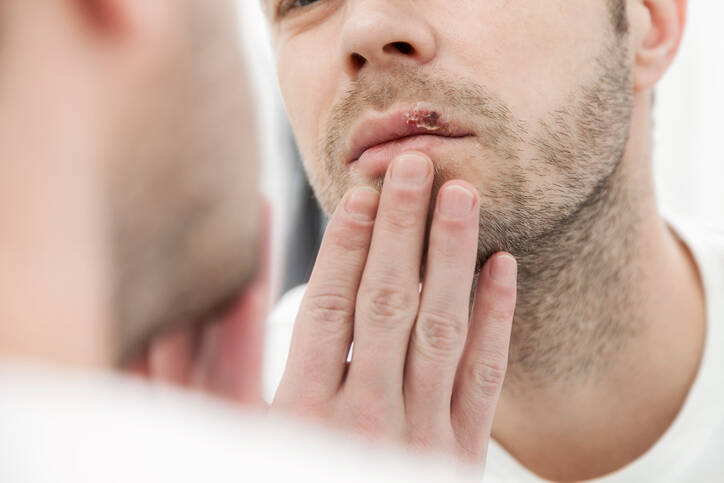
Cold sores - can be seen on the lip, nose, eye, genitals and on the skin. It has different clinical manifestations, forms and can be dangerous.
Article content
Herpes - it can be seen on the lip, nose, eye, genitals and also appears on the skin.
It has various clinical manifestations and forms and can cause infection of other organs and systems.
Cold sores or herpes (which means to creep in Greek) are caused by the herpes simplex virus (HSV). It can also be a remnant of chicken pox (varicella), which enters the body from the skin and mucous membranes - the herpes zoster virus.
It is the most common viral infection in humans.
It is unpleasant mainly because of the patient's discomfort, pain in the area of seeding and its virulence - contagiousness. It cannot be cured completely, but its symptoms during the active phase can be suppressed, which make a person's life uncomfortable.
If you want to know how to do it, read on.
Most often it appears on the lip, near the nose, but it does not pass through the genitals and other parts of the body. Herpes, also called cold sores, is a viral disease manifested externally by the formation of painful blisters.
It is curable, yet recurs (persists) throughout life.
What causes cold sores - also called herpes?
As mentioned at the beginning, herpes is caused by the herpes virus. It is a highly virulent (highly contagious) virus with frequent relapses (recurrence) that remains in the host body even during the latent stage (when it is not outwardly manifested).
It is carried and transmitted exclusively by humans.
Up to 98% of people have it.
It remains hidden in the vast majority.
Herpes viruses (herpes viridae) belong to the group of DNA viruses of the genus simplex virusis. They are transmitted either by direct contact or by droplet infection. They are resistant to the body's immune system and manifest themselves externally in immune system disorders.
In the human body, they 'hide' along nerve fibres and move outwards during the active stage. They attach to and fuse with the cell membrane.
During this stage, they can be observed on the skin and mucous membranes as they are known to the general public.
Categorisation of herpes viruses
Herpes simplex virus is also called HSV virus. It is divided into two types or subcategories that are similar.
- HSV-1 - This is herpes virus type 1 and is more commonly associated with infection on the face, lip or nose. It presents with a painful blister, later ulcerated and healing scab. The blister is unimorphic (monomorphic). The course is milder than other forms.
- HSV-2 - Herpes virus type 2 is found in genital infections. It affects both men and women equally. Due to the localisation of the virus, it can also be transmitted by sexual contact and the course of the disease is more painful. It is manifested by inflammation of the skin and polymorphic (multifaceted) blistering in the genital area and anus, healing as in HSV-1 scabs.
Herpes zoster virus is the so-called VZV virus. This name is short for the causative agent of the disease, which is the varicella zoster virus or varicella zoster virus. It is also known as shingles.
This name is derived from the location of the vesicles, which are located on the skin along the sensory nerves. The affected area is reddened with seeding of papulo-vesicular vesicles arranged in a band exclusively affecting one side.
When and where does it appear?
The herpes virus has two phases. The first is the latent (asymptomatic) phase, when the herpes is present in the body near the nerves but remains hidden.
It does not manifest itself externally and the person does not even know that he has it. In this phase, it does not affect the quality of life in any way.
However, when the immunity is weakened, the virus reactivates, i.e. becomes active. The second phase - the manifest (outwardly manifest) phase - begins.
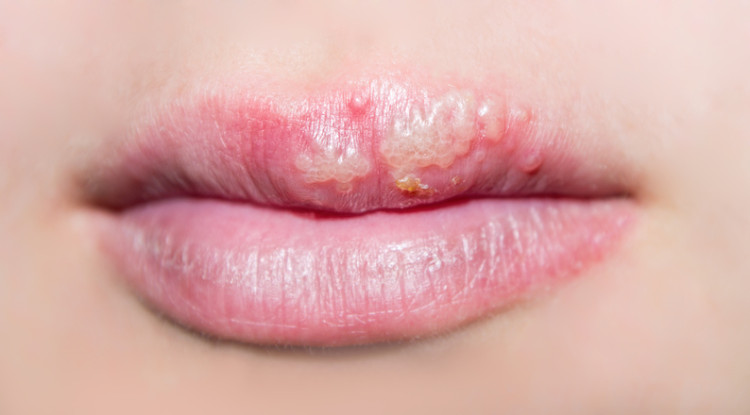
Herpes labialis
Labial herpes is translated as herpes on the lip. The lips are the most commonly affected area in terms of the location of the herpes.
It spreads slightly towards the nose or inwards onto the tongue and throughout the oral cavity. It typically occurs with a slight tingling and burning sensation on the lip.
The affected area is sensitive to touch with local swelling. Small vesicular vesicles filled with clear fluid rich in millions of herpes viruses begin to form in the swollen area.
This is the most infectious stage. The blisters rupture and a crust (scab) forms with subsequent healing with the possibility of scarring.
Herpes nasalis
Herpes nasalis is a cold sore on the nose, more commonly in the nostrils. It arises directly there or is transmitted secondarily from another site, most commonly the lips.
The onset, course and healing phase are the same as for labial herpes.
Herpes facialis
Herpes facialis means facial herpes. The affected part of the face is usually in the region of the facial (facial nerve). The onset is accompanied by tingling of the affected part of the face, increasing to pain. It changes to redness with seeding of blisters.
Herpes corneae
Herpes corneae causes superficial keratitis - corneal herpes.
It lasts up to several months and results in scarring of the cornea, clouding of the eye and subsequent deterioration of vision.
Milder forms heal quickly.
The affected person feels as if there is something in the eye (dust, foreign body). It is sensitive, painful with increased tearing. The bulbus (white of the eye) tends to be red like in an eye infection, which is due to increased blood supply.
Visual acuity is lost, vision is blurred and the patient is sensitive to harsher light (photophobia). Tiny vesicles, which resemble small chains in shape, are found on the cornea.
The condition may be associated with swelling of the upper eyelid and itching.
Herpes genitalis
Herpes genitalis is particularly unpleasant precisely because of the location of the seeding.
This is in the genital area and can spread to the anal opening.
It is more common in individuals with an active sex life.
At the same time, inflammation of the urethra may occur, and vaginal discharge is usually present in women.
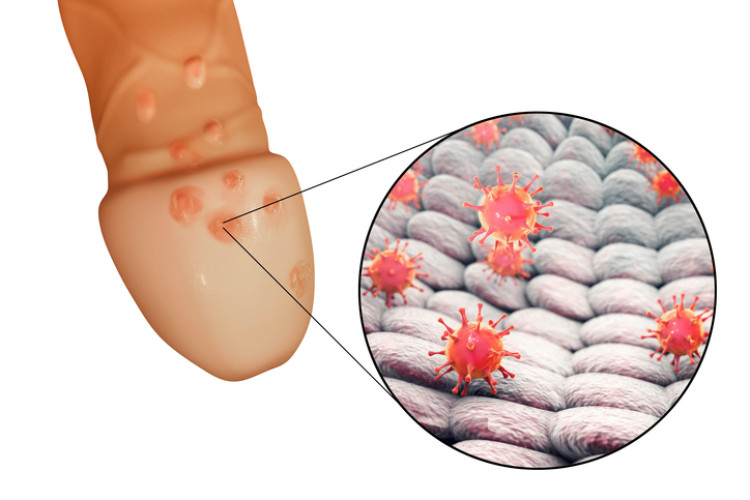
It begins with unpleasant itching, resembles various urethritis or mimics other sexually transmitted diseases.
It is also unpleasant for reasons of hygiene, which is particularly difficult to maintain in these places.
Newborn herpes
Perinatal/postnatal neonatal herpes is an infection that enters the newborn's body during intrauterine development or just after birth.
The mother is usually the source of the infection.
However, the newborn often develops various complications depending on the organ that is affected. Meningitis, encephalitis, hepatitis, bleeding disorders and disseminated intravascular coagulopathy (DIC) are found.
Herpes zoster, so-called shingles
Herpes zoster (shingles) occurs on the body in the area of the nerves, usually on the back. The affected person feels a tingling sensation in the area, which turns into pain of severe intensity.
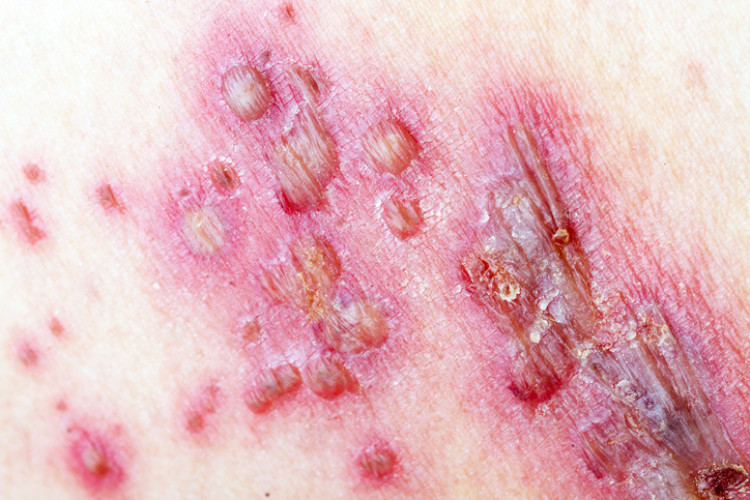
The tingling sensations (paresthesias) are a precursor to shingles. The increased pain can usually radiate to the chest. It mimics normal back pain, pneumonia, kidney pain or acute heart attack.
At this stage, it is difficult to diagnose for the layperson without further examination and manifestations. Subsequently, redness and the typical herpetic seeding on the body develop.
Manifestations of herpes zoster
- The incubation period from infection to the first symptoms is no more than 3 to 5 days
- Herpes begins to manifest itself by tightening of the skin and a slight burning and tingling sensation
- The skin around and at the site of the itch subsequently swells and turns red. This stage usually lasts until the following day
- Then a vesicular blister filled with clear fluid begins to form at the site of the itch
- There are several blisters, which can merge into larger ones and form larger deposits, which spread to the surrounding area or are transferred to a completely different location if not properly cared for, especially by hand contact.
- Their formation is accompanied by unpleasant pain
- The blisters start to burst on the 4th-5th day
- The fluid that comes to the surface is full of viruses
- which means that this stage is the most risky to get infected, but certainly not the only one, as is erroneously described on some websites
- The ruptured vesicle becomes an ulcer with local inflammation
- The ulcer heals with a scab that is prone to rupture
- It forms small tears with a tendency to bleed, accompanied by pain
- At this stage, the sore either heals or recurs
+
The specifics of the symptoms depend on the location and type, as mentioned above, for example:
- In ocular herpes, there is a foreign body sensation in the eye, tearing, visual disturbances.
- Ear herpes is accompanied by dizziness, hearing loss, nausea to vomiting
- Herpes zoster affects the deeper layers of the skin, is more extensive and has a long duration. It heals with large scabs that leave scars
- Genital herpes is accompanied by unpleasant itching, vaginal discharge, inflammation of the urethra with burning during urination
- the seeding tends to spread towards the anus and, if left untreated, to the thighs
How does herpes spread?
The herpes virus is highly infectious, especially at the stage when blisters filled with clear fluid appear on the skin.
However, this is not the only infectious phase.
Transmission occurs through saliva and direct contact. It can occur, for example, by kissing if it is on the lip, or by indirect contact when drinking from the bottle of someone who has the active phase of herpes, using their toothbrush, cutlery or lipstick.
In genital herpes, this can be sexual contact.
It is possible to transmit oral herpes to the genitals, cutaneous herpes to the lips and vice versa. It enters the body through mucous membranes, conjunctivae and broken skin.
Advice on how to speed up the healing and treatment of herpes
- Care aimed at treating cold sores should have one guiding principle, and that is to minimise touching the herpes
- A big mistake is puncturing the blisters, after which the highly infectious fluid is transferred to other sites
- Wash hands thoroughly with soap after each contact to prevent further spread
- The affected area should be iced. Cold temperatures locally constrict the blood vessels and thus relieve the blood supply to the site. This prevents the progression of the virus, reduces swelling and pain.
Home advice - herbal treatment
Cleaning the cold sore before topical treatment is advisable with plain water, hydrogen peroxide or Australian tea tree oil also used for treatment.
Herpes can also be cleaned and treated with tinctures or decoctions obtained by infusing the leaves or flowers of various plants.
Read also the article.
The beneficial effects of some of them are listed below.
However, we must never forget that it is not a substitute for a real treatment of herpes. In addition to the treatment, we must also think about jump-starting our immunity.
It is advisable to increase the intake of zinc, selenium, lysine, vitamin C and B vitamins.
On the other hand, we should avoid foods high in arginine, such as chocolate, cola, cashew nuts, beer and others.
Which herbs are most effective in treating cold sores?
- You can read a lot on the internet about the beneficial effects of aloe vera.
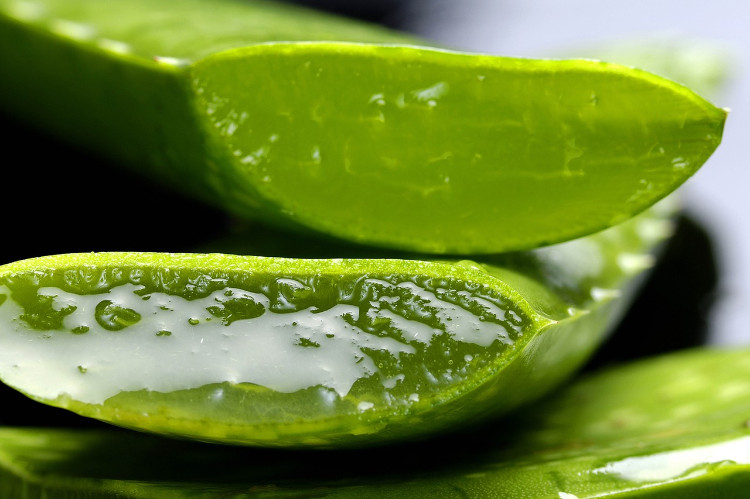
Aloe vera, or aloe vera, is a shrub that looks very much like a cactus. Its home is Africa. Its healing powers were known to the ancient Egyptians, as evidenced by various documents.
In ancient Egypt it was also called the plant of immortality and was part of funeral rituals. Tradition has it that aloe was one of the beautifying substances of Cleopatra herself.
It came to Europe via Arab traders.
It has excellent anti-inflammatory and healing properties.
It is used, among other things, for inflammatory, purulent skin diseases and ulcers. The main medicinal component of aloe is aloin. It is contained in the fleshy leaves of the plant.
In addition, it contains other vitamins, minerals and enzymes. It is undoubtedly a medicinal plant, but its effects are mainly antibacterial. This means that in the treatment of cold sores it is most effective in the ulcer or cracked scab stage, when the risk of secondary bacterial infection is increased.
It accelerates the healing process itself.
It is used either topically from a freshly cut aloe leaf or also as a general treatment. In the case of cold sores, topical application is better, as its laxative effects may be evident when used as a general treatment.
The recommended daily dose is 1/2 to 1 teaspoon for an adult.
There is a risk of kidney damage if aloe is overdosed during internal use in excessive doses. Aloe tablets or pure aloe are not recommended for pregnant women or for bleeding conditions or diseases such as menstruation, other gynecological bleeding, or currently bleeding hemorrhoids.
- There are many known species. Each species has significant antimicrobial, antiviral and antifungal properties due to a substance called allicin.
We are talking about garlic (allium sativum).
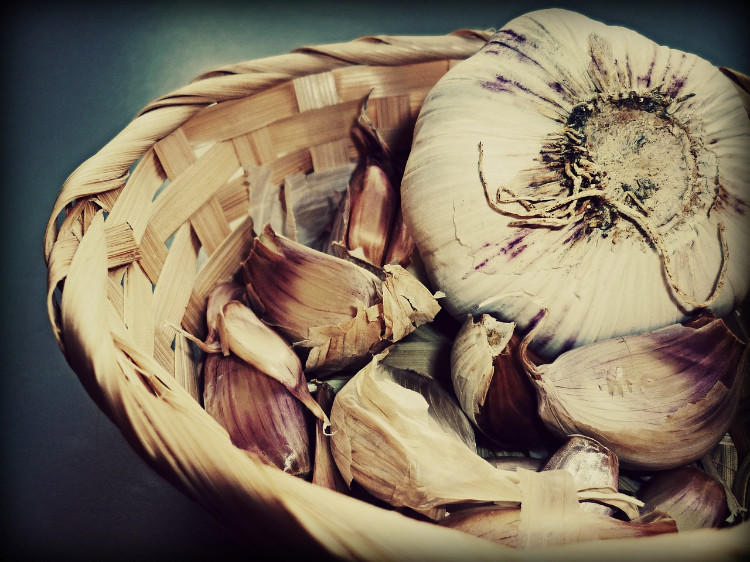
In addition to the aforementioned allicin, it contains a wide range of vitamins (A, B, C, D), minerals, trace elements, selenium, calcium, sulphur compounds and iodine.
It has been used in the ancient past, as well as aloe in ancient Egypt, where it was given to slaves to build the pyramids for strength and endurance and as a preventive against various diseases.
Its antiseptic effects were used during both world wars. During World War I it was the most famous antiseptic, and during World War II (after the discovery of penicillin) it was used when penicillin was in short supply.
It is so effective that it is able to kill even resistant strains of bacteria, such as the well-known multi-drug resistant golden staphylococcus aureus. It can also deal with the most notorious yeast fungus, candida albicans, which some sources say promotes the development of malignant cancer cells.
It is effective in fighting free radicals, and serves as an antidote for poisoning. It is taken internally by ingesting a fresh clove (2-3 cloves a day is recommended) or cut and applied topically. The cut side is applied to the affected area.
Crushed garlic can also be added. The affected area is understood as herpes, wart, acne, ulcer. It has the most pronounced effects when raw.
- The distinctively aromatic Australian tea tree oil, extracted from the wild trees of the east coast of Australia, Melaleuca alternifolia, known as tea tree oil, is still at the forefront.
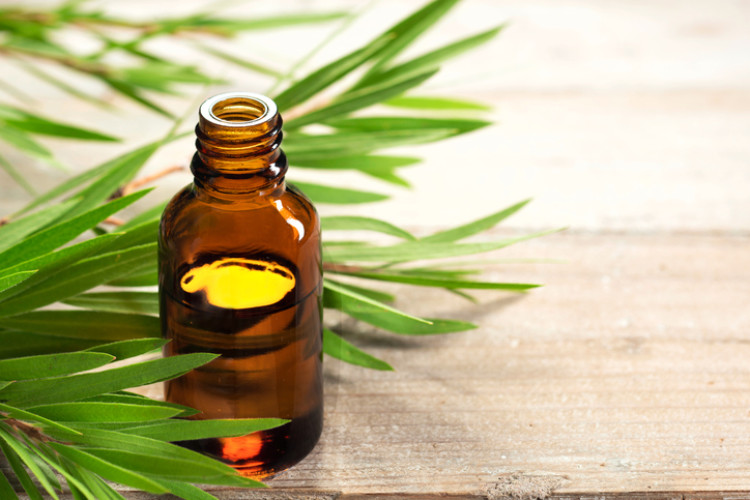
Originally used by the Aborigines to treat wounds, burns and colds, it was brought to Europe by the great explorer and sailor James Cook.
It has antimicrobial, antiviral, antiseptic and antifungal properties, first documented in 1920 and currently accepted by the European Pharmacological Commission. It is one of the substances with a confirmed therapeutic effect.
Tea tree oil is a 100% pure oil obtained by pressing the myrtle-like leaves of the Australian tea tree. It is very effective for skin infections, including cold sores.
It is very gentle on the surrounding skin, causing no irritation. Exceptions may be made for excessive use in sensitive individuals. It is recommended to rub a thin layer of tea tree oil on the affected area without over-applying. It can also be used by steaming or a tea tree bath can be prepared.
A foot bath is also excellent, especially for fungal diseases.
Lesser known herbs also suitable for treating or disinfecting cold sores
- A historically younger and lesser-known plant is Echinacea purpurea. It has been used by the indigenous peoples of North America to heal septic wounds and poisonous snake bites for the last 100 years. It is a dark pink flower with hairy stems and pointed leaves with serrated edges.
It has a wide range of uses.
It is effective in fighting several types of bacteria, but it also has antiviral effects. It has been shown to have the ability to stop the growth of cancer cells. When used externally, it heals wounds, ulcers, rashes and is also used in the treatment of cold sores because of its antiviral effect.
It can be used raw, as a decoction, and more recently has been popularly used as a component of many ointments.
- A very well-known mushroom originally cultivated in Japan is called the edible mushroom/shii-take (tentinus edodes). It is usually used in general by ingesting it.
According to some unverified sources, it can "prolong life" due to its significant regenerative effects when consumed regularly. This opinion is gradually overwhelming even civilized countries. Whether this information is true or not can only be debated.
However, the anti-viral, anti-sclerotic, anti-allergic and anti-cancer effects of this mushroom are unquestionable and also proven. It is recommended to consume it regularly as a preventive measure. However, tinctures are also used, mostly for flu or in its raw state for allergies or cancer.
As mentioned above, it is part of prevention rather than treatment.
It is also recommended for herpetic seeding as part of a diet with antiviral effect, but not as a treatment. Its main active ingredients are polysaccharides, lentinans or the alkaloid erythadenine.
- The effects of royal basil, from the Latin ocimum basalicum (okimon - to smell, basilikos - royal), are particularly widespread. The country of origin of this medicinal herb is India.
It is characterised by its specific and strongly aromatic scent and is known mainly as a flavouring (spice) used mainly in gastronomy.
It contains basil camphor, essential oil, essential oils, glycosides, tannin, flavonoid, cineol and others. When ingested as a whole, it is anti-inflammatory and when rinsed in the mouth it is used for various local diseases and inflammatory processes in the oral cavity, as well as other skin inflammations.
In herpes, it is also recommended only in the healing phase.
- It has always been attributed with magical powers and has been used to ward off evil spirits. Even today, we look for four-leaf clovers in its sowing, which are a symbol of good luck and provide personal protection. This mystical plant is called meadow clover (trifolium pratense).
It is mainly found in Europe, but is also known in Africa.
It contains resins, essential oils, tannin, flavonoids, glycosides, tannins, dyes, phenolic substances and various other substances, the combination of which is gentle and non-aggressive for the regulation of the proper function of organs and organ systems.
It has disinfectant properties, so it can be used to clear herpes. It also acts against swelling and stronger decoctions are effective in the treatment of purulent wounds, cold sores, acne or eczema.
- In alpine areas, more often in the subalpine zone, especially in the lowlands, the Balkans and Eastern Europe, we can find eelgrass, in Latin anthyllis vulneraria. It is a yellow clover with hairy leaves of a fine silvery colour.
In folk medicine, however, this plant, especially its yellow flowers (brown when dried), is well known and used for its beneficial anti-inflammatory effects.
It contains organic acids, essential oils, sugars, saponins, anthocyanins and others. These substances are mainly disinfectant, so the broth can also be used to clean the herpes before the treatment.
When used externally, it helps with skin diseases and wounds ranging from cold sores, ulcers, inflamed and swollen wounds, decubitus ulcers, abscesses to treating burns or frostbite.
The advantage is that it does not have side effects of a more serious nature and can be used in general even in children or pregnant women.
- The overhanging birch (Betula pentulatrom) is a well-known tree growing up to 25 m in height. Its leaves are mainly used therapeutically, but birch bark or buds are also sometimes used.
The leaves are dried and have a high content of vitamins, minerals, organic acids, sugar, essential oils, flavonoids, saponins, tannins and betulalbin.
A decoction prepared from this plant is antiseptic and anti-inflammatory.
It is mainly used in wraps, but also crushed leaves are used for abrasions, wounds, eczema, lichen and for purulent skin inflammations that may arise secondary to herpes bacterial infection.
Pharmacological treatment of herpes zoster
- Antiviral drugs are of the greatest importance in the treatment of herpes zoster. The actual effect of the treatment depends on several factors - not least the timing of the antiviral.
The most effective treatment is that given within 72 hours.

The dose of the antiviral must be sufficient. The most commonly used antiviral is acyclovir, which is actually an acyclic analogue of guanosine. It is also suitable for patients suffering from immunodeficiency diseases (for example, AIDS patients). It is known as herpesin and can be obtained in tablet or cream form.
- An improved precursor of acyclovir is valacyclovir. It is much more effective, does not need to be given as often as acyclovir, but is less available because of its higher price.
It is suitable for preventing the growth and killing herpes simplex viruses (herpes simplex, shingles, cold sores, genital herpes), varicella zoster and cytomegaloviruses.
It is not recommended for children under 12 years of age, pregnant and lactating women. It is also not recommended when planning a pregnancy.
- Another alternative is brivudine, also known as zovudex. It is a drug that stops the herpes virus from reproducing. Unlike acyclovir, it cannot be used by people with immune system diseases, including people who are undergoing chemotherapy at the same time.
Its use in this case can have serious consequences ending in death.
- Acyclovir is very effective in the treatment of simple herpes and its preparations are freely available without a prescription. In the case of recurrent, prolonged (persistent) herpes, it is advisable to consult your doctor to determine the correct treatment.
The home recipes described above are only a complementary treatment option for herpes or serve as a suitable disinfectant before the actual treatment.
It is important to note that despite the powerful effects of herbs, they can never replace pharmacological treatment alone. This is because the active substances contained in herpes ointments work directly against the specific virus.
Related










